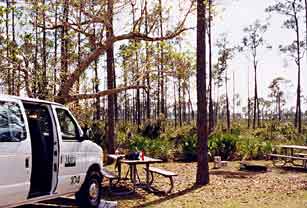
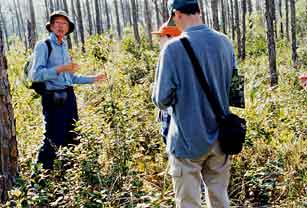
1999 Long Pine Key campsite of the UM weekend advanced field ecology course. Evenings, students apply what they learned to real management problems.
Rick explaining Everglades pineland ecology, noting the high concentration of temperate species. Species are identified and reasons they live here discussed.
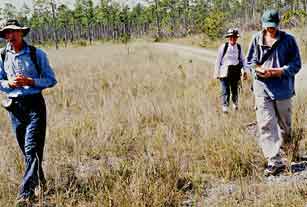
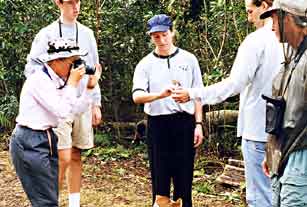
Prairie species and habitat explained, we head to tropical hardwood hammock for a similar discussion of species (mostly tropical) composition and habitat preferences.
Part of ongoing research into bird seed transport, Jean takes photo of mistnetted bird to be temporarily placed in the paper bag (lower center) to collect fecal sample.

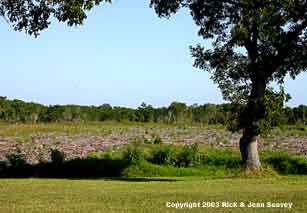
Brazilian pepper, Schinus terebinthifolius, an invasive exotic, thick along road to fish cleaning station in Flamingo, Everglades National Park.
The same area as photo to left after Brazilian pepper was chipped in 2003. By 2004 many pepper resprouts were evident as well as those of native species.
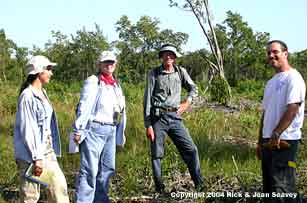
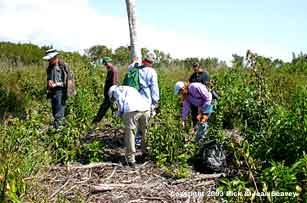
Instructors Dr. Carol Horvitz (left center) and Rick (right center) with students in chipped site one year after treatment. Course: Applied Research Methods.
After touring site & identifying plants, students apply research methods to task of understanding B. pepper resprout behavior & providing control suggestions.
This is only a small example of our cooperative work with Dr. Carol Horvitz, Professor UM Biology Dept. We spent many years studying the behavior of Ardisia elliptica together; with one student gaining his doctorate with research into the non-native ardisia and another researching the native, Marlberry, Ardisia escallonioides. Both now have jobs in their field of study.